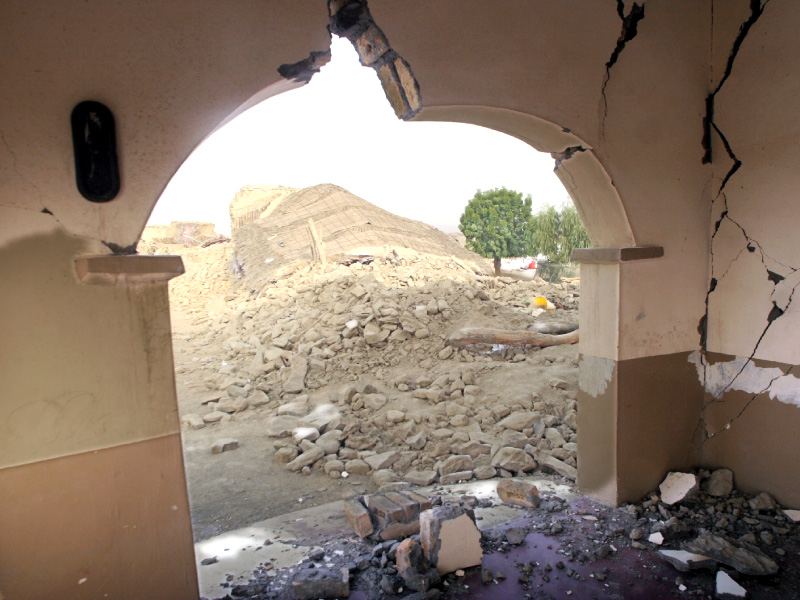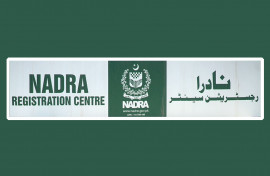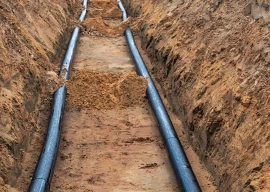
“Do you have an identity card?” the earthquake victims are asked over and over again, by local administration officials, by the law enforcers – and even by NGO volunteers.
With literally everything buried under the rubble of their flattened mud houses, and little relief work under way, this question adds salt to the injuries of survivors.
“My card is under the debris of my house,” says Aasa Khan of Teeltij village. “Should I search for it, or should I look after my family, at a time like this?”

No card, no relief
Most victims realise that the CNIC is important for access to relief goods and help from the government and nongovernmental organisations (NGOs). And yet, the people of Awaran generally do not keep their identity cards in their pockets – a practice which has complicated the problem. Only those residents that travel outside Awaran frequently – mostly to Karachi or Quetta – keep the cards with them, as law-enforcement agencies ask travellers for their CNICs at every checkpost.
“Most of us keep our cards at home because there is no need to have them on us all the time,” justifies Khan. “But now my relatives have informed me that officials will ask for cards, and if we don’t provide one, our relief assistance will be delayed.”

Naseer Ahmed of Malar doesn’t see the need of asking for identity cards, especially during a time like this.
“Look at the rubble,” says Ahmed. “It needs time, labour and machinery to sort out. If the groups really want to help us, there is no need to ask for cards.”
Official hiccups
According to Assistant Commissioner Bela Afzal Sarpara, the issue of identity cards has certainly created a problem in the relief distribution process but help is indeed being provided.
“Our focus is to provide relief, including shelter, food, water and mosquito nets,” he says. “The local administration knows the people of the area well, so most of those affected are easily identifiable as earthquake victims.”

Abdul Ghani, the social mobiliser of the National Rural Support Programme, agrees with Sarpara that this has created serious hurdles for those engaged in relief work.
“Yes, it is a major issue. We need to check their identities but most of them have lost their cards,” he says. “I am issuing code numbers to those who do not have ID cards but they will have to show [their cards] during the next visit.”
Manzoor Baloch, the manager administration of HANDS working in Awaran, says donors also want to see identity cards. “Over 60 per cent population has lost its cards. Our team just received 30 cards for 100 people in a village near Awaran city,” he says.
A cardless populace
In fact, not all residents had cards to begin with. According to the district profile conducted by Balochistan’s Planning and Development Department in collaboration with the UN Children’s Fund (Unicef) in 2011, the total population of Awaran district stands at 124,000 and only 49% of the people have obtained national identity cards (NICs).
There is only one National Database and Registration Authority (Nadra) office in Awaran city which was set on fire and had been closed for many years.
“The ‘operations’ started there again just three years ago,” explains a local social worker, Abdul Karim. “The staff demands money for cards and the poor people from remote areas can’t afford it. How can people from far flung areas travel to Awaran just for ID cards?”
According to him, hundreds of families from different areas of Awaran district have migrated to Lasbela, Hub and Lyari due to unstable conditions, so the local administration officials, who rarely visit the district, are having trouble identifying the affectees.
A top official in the provincial government says that the data generated by the Planning and Development Department (PDD) and Unicef is not accurate.
“It is a disturbed area and the data obtained is not reliable. The population of Awaran is probably more than what the district profile depicts,” he claims, adding: “It was a no-go-area before the earthquake. The majority of affected people won’t have cards and it’ll definitely create issue for donors and the local administration alike.”
Published in The Express Tribune, October 2nd, 2013.























COMMENTS
Comments are moderated and generally will be posted if they are on-topic and not abusive.
For more information, please see our Comments FAQ